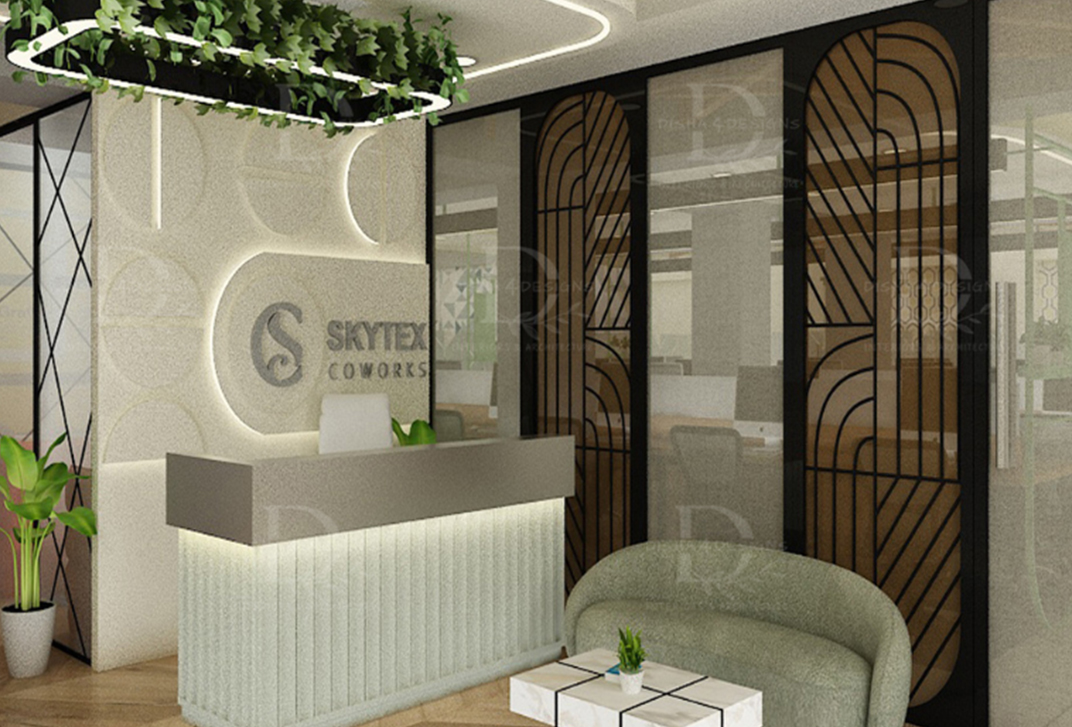As an interior designer, Disha4designs understand the importance of creating a workspace that not only looks good but also functions well for the people who will be working in it. A corporate office is no exception. A well-designed office can enhance productivity, improve morale, and even attract new clients. In this article, I will discuss some key elements to consider when designing a corporate office.
One of the first things to consider when designing a corporate office is the layout. The layout should be functional and efficient, allowing for easy movement and communication between different areas. It’s important to ensure that each department has enough space to work comfortably and that there is adequate storage for files, supplies, and equipment. Another important element to consider is lighting. The lighting in a corporate office should be bright enough to facilitate work and productivity but not so bright that it causes eye strain or headaches. Natural lighting is also important, so if possible, try to incorporate large windows or skylights to allow in as much natural light as possible.
When it comes to color schemes, it’s important to choose colors that promote productivity and creativity. Neutral colors such as white, beige, and gray can help create a calm and organized atmosphere, while brighter colors like blue and green can stimulate creativity and focus. However, it’s important to strike a balance between neutral and bright colors to ensure that the office doesn’t become too dull or too distracting. Furniture is another crucial element in any office design. The furniture should be comfortable and ergonomic, with adjustable chairs and desks to accommodate employees of different heights and body types. Consider incorporating standing desks or treadmill desks to encourage movement and combat the negative effects of sitting for long periods.
In addition to functional furniture, it’s important to consider decorative elements to add visual interest to the space. Artwork, plants, and other decorative elements can help create a welcoming and inviting atmosphere, which can improve employee morale and make clients feel more comfortable. However, it’s important not to go overboard with decorations, as too much clutter can be distracting and overwhelming. One trend that has become increasingly popular in corporate office design is the concept of “biophilic design.” This design philosophy incorporates elements of nature into the office, such as plants, natural materials like wood and stone, and natural lighting. The idea is that this connection to nature can improve employee well-being, creativity, and productivity.
When it comes to technology, it’s important to incorporate the latest advancements to facilitate productivity and collaboration. This can include video conferencing technology, smart whiteboards, and other tools that allow for easy communication and collaboration between employees and departments.
Finally, it’s important to consider the overall brand image and culture of the company when designing a corporate office. The design should reflect the company’s values, mission, and culture, and should be consistent with the brand image that the company wants to project. This can include incorporating company colors and logos into the design, as well as incorporating elements that reflect the company’s history and achievements.
In conclusion, designing a corporate office involves careful consideration of a variety of elements, including layout, lighting, color schemes, furniture, decorative elements, and technology. By taking a holistic approach to office design and considering the needs of both employees and clients, an interior designer can create a space that is not only functional but also visually appealing, welcoming, and conducive to productivity and creativity.


